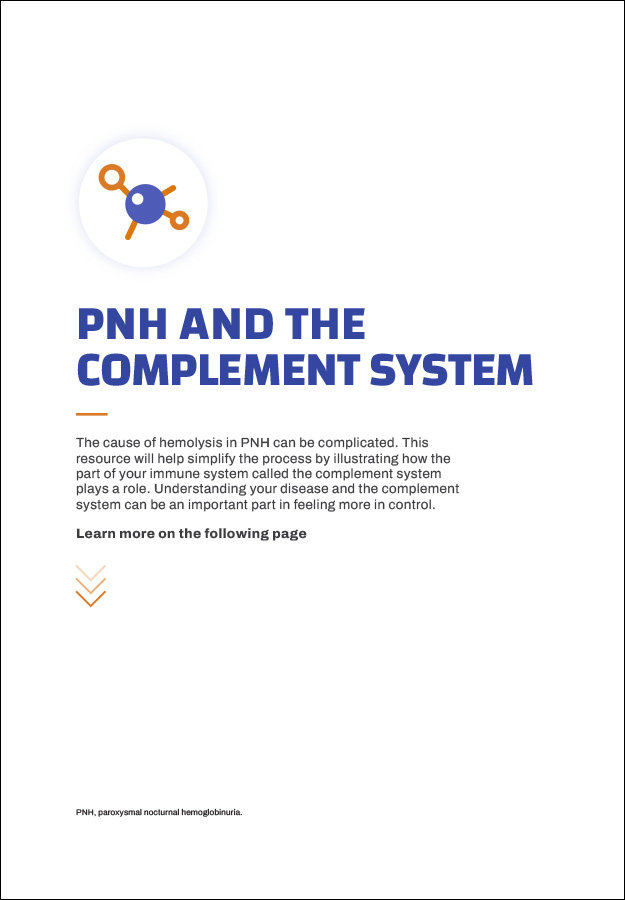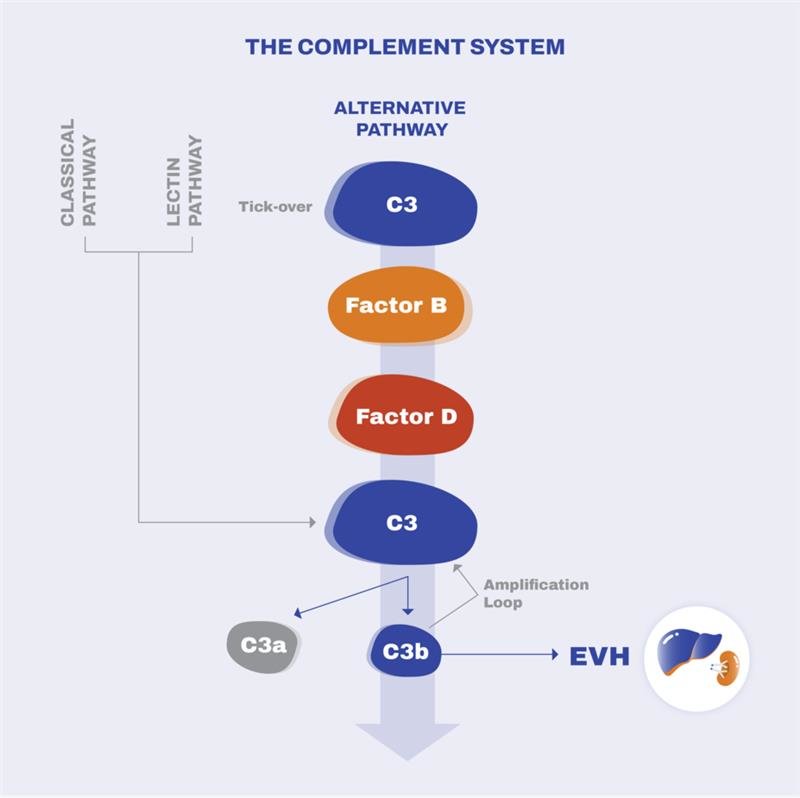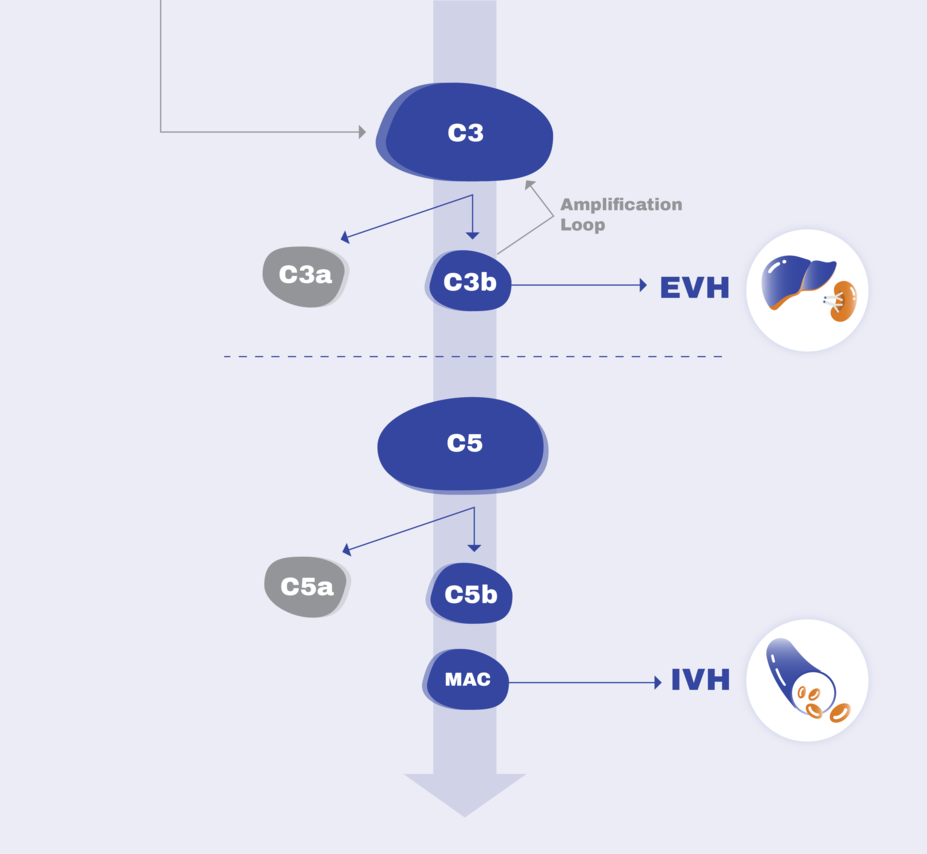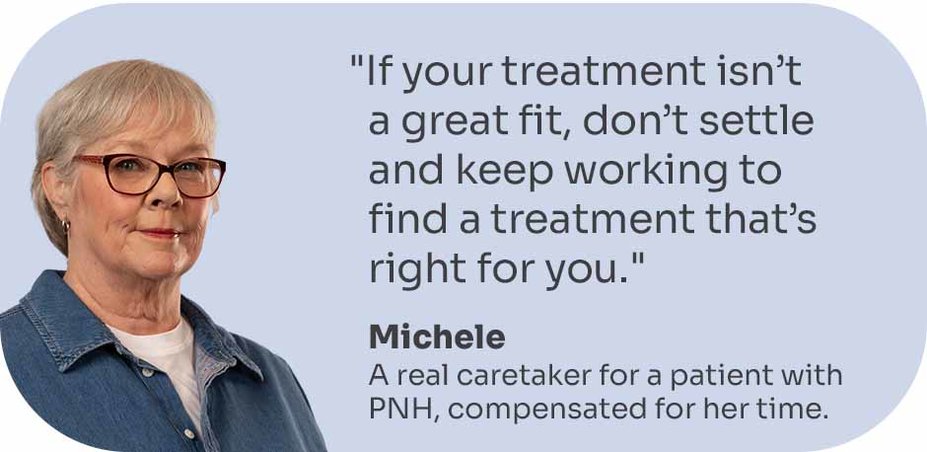
It's time to rethink PNH
Both types of hemolysis, intravascular hemolysis (IVH) and extravascular hemolysis (EVH), should be accounted for in the management of PNH
C5 inhibitors only focus on the part of the complement system responsible for IVH. Because the part responsible for EVH is left unaddressed, your PNH red blood cells are still vulnerable to attack.
The role of the complement system in PNH
There are 3 different pathways in the complement system: the lectin, classical, and alternative pathways. The alternative pathway plays an important role for hemolysis in PNH.
There is an upper part and a lower part of the complement system. Both parts in the alternative pathway contribute to hemolysis in PNH.
The upper part of the complement system
The alternative pathway includes proteins such as Factor B, Factor D, and C3. Interactions between these proteins drive EVH.
The upper part of the complement system leads into the lower part.
The lower part of the complement system
This part consists of interactions between C5 and other proteins. These interactions drive IVH.

See more on the science behind PNH
Keep the dialogue going with your doctor

By taking a more active role in managing your PNH, you can confidently advocate for yourself and your needs
Don’t settle for hemoglobin levels that are below normal
Discuss the symptoms that are troubling you—including fatigue, shortness of breath, and brain fog
Tell your doctor if you have any struggles with your current treatment




